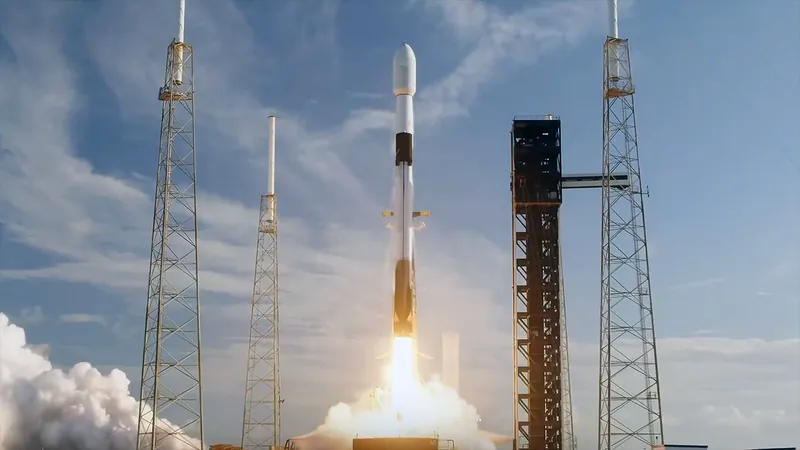
History in the Making: SpaceX Launches Groundbreaking Cygnus XL to the ISS!
2025-09-14
Author: Ting
A Stellar Mission Launches!
In an exhilarating feat of space logistics, SpaceX successfully launched Northrop Grumman's cutting-edge "Cygnus XL" cargo ship on its inaugural mission to the International Space Station (ISS) on Sunday evening, September 14.
Lift-off from Cape Canaveral!
The Falcon 9 rocket thundered skyward from Cape Canaveral Space Force Station at precisely 6:11 p.m. EDT (2211 GMT), setting the stage for a mission that promises to reshape cargo transport to the ISS.
Turning Point in Space Logistics!
Designated as NG-23, this mission marks Northrop Grumman's 23rd cargo delivery to the ISS for NASA. The Cygnus XL, a more robust version of its predecessor, takes its first flight this mission, following a series of delays that saw its last mission, NG-22, scrapped due to unforeseen transport damage.
Unprecedented Cargo Capacity!
Unlike its earlier counterpart that shipped 8,500 pounds (3,855 kg), the new Cygnus XL is capable of transporting an impressive 11,000 pounds (4,990 kg). Packed with valuable supplies, this spacecraft is set to revolutionize scientific research in space.
Innovations in Science Await!
This maiden voyage is no small feat. NASA has loaded the Cygnus XL with vital materials for semiconductor crystal production in the unique environment of space, alongside equipment for advancing cryogenic fuel tank technology. Furthermore, it carries a specialized UV light system designed to stave off microbial growth in water systems. Perhaps most excitingly, it brings supplies necessary for creating pharmaceutical crystals that could change the landscape of cancer treatment and other diseases.
Honoring Astronauts!
In a touching tribute, Northrop Grumman named the NG-23 Cygnus as the S.S. William "Willie" McCool" in memory of the late NASA astronaut who tragically lost his life in the 2003 Space Shuttle Columbia accident.
Countdown to Docking!
Scheduled to arrive at the ISS on Wednesday, September 17, at 6:35 a.m. EDT (1035 GMT), the Cygnus XL will not autonomously dock but will be captured by the ISS's powerful Canadarm2 robotic arm—a sight that NASA will livestream starting at 5 a.m. EDT (0900 GMT).
A Long Stay Ahead!
Once attached to the orbiting laboratory, the Cygnus XL is set to remain until March 2026, at which point it will re-enter Earth's atmosphere in a controlled burn, concluding its mission with a spectacular farewell.
This monumental launch not only showcases advanced aerospace capabilities but also underscores the importance of international collaboration in space exploration and scientific progress.




 Brasil (PT)
Brasil (PT)
 Canada (EN)
Canada (EN)
 Chile (ES)
Chile (ES)
 Česko (CS)
Česko (CS)
 대한민국 (KO)
대한민국 (KO)
 España (ES)
España (ES)
 France (FR)
France (FR)
 Hong Kong (EN)
Hong Kong (EN)
 Italia (IT)
Italia (IT)
 日本 (JA)
日本 (JA)
 Magyarország (HU)
Magyarország (HU)
 Norge (NO)
Norge (NO)
 Polska (PL)
Polska (PL)
 Schweiz (DE)
Schweiz (DE)
 Singapore (EN)
Singapore (EN)
 Sverige (SV)
Sverige (SV)
 Suomi (FI)
Suomi (FI)
 Türkiye (TR)
Türkiye (TR)
 الإمارات العربية المتحدة (AR)
الإمارات العربية المتحدة (AR)